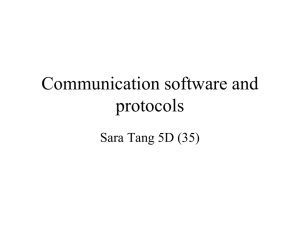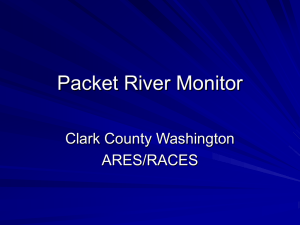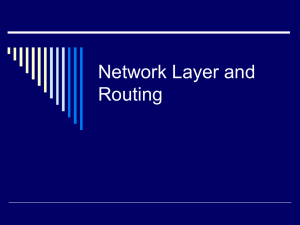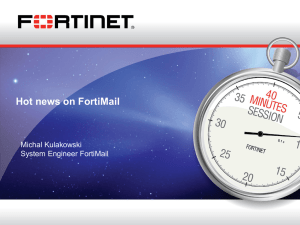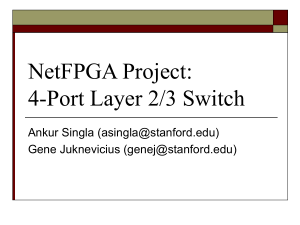A Simple Network Analogy
advertisement
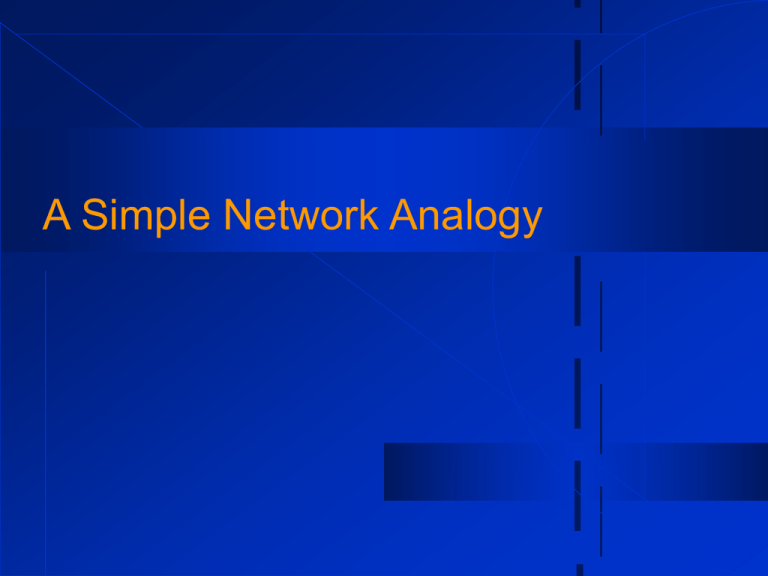
A Simple Network Analogy Components of our Imaginary Mail Network Assistant Warehouses of documents stored in folders Warehouse address operators Packets (envelopes) of information Local Mail Room Gateway mail routing center Regional/national mail routing centers Purpose of our Mail Network Your assistant is to request documents (by mail) and interpret them for you. Limitations and obstacles We can’t remember addresses, only names. We can only mail to addresses. We use small envelopes. We have an envelope/hr. limit. Limitations and obstacles (cont’d) Warehouse worker is fast, but not very bright. We must specify the document location within the warehouse. Warehouses can be reorganized, shut down, or renamed overnight. While the document language is supposedly standardized, some document authors use slang terms. The Perfect Process Give assistant warehouse name, document name and location. Assistant contacts warehouse address operator for address. Assistant mails warehouse requesting the document. Warehouse mails assistant the document in pieces. Assistant assembles the document. If pieces are missing, assistant mails warehouse to re-send. Assistant interprets document and presents to you. Structure Packet - Named Structure Structure Packet - Addressed Structure Analogies Mailing method: Transfer Protocol (e.g., http) Warehouse Name: Domain Name (e.g., www.education.umd.edu) Document location: Pathname Document name: Document name (often includes type or language) Document language: Hypertext Markup Language MailingMethod://WarehouseName/DocLoc/DocName: Uniform Resource Locator (URL) Analogies Warehouse Address Operator: Domain Name Server (DNS) Missing pieces re-send: Transfer Control Protocol (TCP) Mail Room Routing Rules: Internet Protocol (IP) Numerical Address: IP address Local Mail Room: Local/Wide Area Network (LAN/WAN) Packet: Data Packet Analogies Warehouse: Web Server Mail Routing Centers: Routers Assistant: Browser Structure Structure - Internet Packet - Unresolved Request Packet - Request to DNS Structure - Internet Structure - Internet (DNS Request) Packet - Response from DNS Packet - Unresolved Request Packet - Addressed Request Structure - Internet (Request with IP) Structure - Internet (Routing Protocol) Structure - Internet (Request rec’d) Structure - Internet (Doc handled) Structure - Internet (Req. honored) Structure - Internet (Packet sending) Structure - Internet (Packet sending) Structure - Internet (Packet sending) Structure - Internet (Packet sending) Structure - Internet (Packet sending) Structure - Internet (Packets sent) The Perfect Process - Internet Type in your browser a transfer protocol, domain, pathname and document (some missing can be assumed). Browser contacts DNS for Domain <> IP Address resolution. Browser uses IP address to mail server your request. Server mails result to your browser in packets of data. Browser assembles the data. If pieces are missing, TCP allows for resending of packets. Browser interprets document and displays result. Summary The fact that the resulting received file can contain links puts the hyper in the hypertext. Document size matters to transmission speed and error reduction. Work computers (at CoE) are still on a relatively high speed connection; modem links will be considerably slower. The internet is a relatively simple idea, but a complex set of connections. Graphics and other multimedia are disproportionately large compared to their text counterparts.
